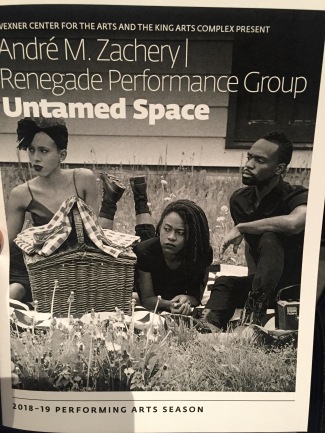
Thomas F. DeFrantz and Anita Gonzalez collaborate on a collection of writings that capture the essence of black performance. Spanning the fields of music, dance, and theatrical performances, this book focuses on the understanding of performance using historical references and the connection of one’s identity to their lineage and environment.
Black performance theory is a culmination of writings that articulate the necessity of black performance decoding. Speaking to the individuality of blackness in an evolving world, the essays navigate the complexities of the black identity while unraveling the web of politics, history, and power that comprise black performance. They analyze the work of Zora Neale Hurston and her theories of black performance methodology linking the individuality of contemporary choreographers to their spiritual Africanist practices. Whether depicting the black movement as spaceships, the use of activism art, or the invigorating music of Little Richard, this gathering of artists and scholars creates a place to meld analytical and personal experiences of black performance.
Chapter five of Black Performance Theory, uncovers the world of theatrical lynching’s and the retaliation of African-American authors and playwrights to maintain an upstanding image of their race. Despite the horrendous tragedies that were showcased, “creative work produced during adversity is not solely a response to outside sources; it is an attempt to safeguard community perspectives” (DeFrantz 2014, 88). Using life experiences as art, writers performed, rejecting negative portrayals viewed during theatrical lynching’s, and uncovered the proof of black humaneness and success. Using the stage as a platform for enlightenment, not just entertainment, allowed for strategic intervention of black artist’s and the examination of cultural realism.
Theorizing black performance is a complicated task, yet is necessary to understand the black experience thoroughly. Black Performance Theory summons fascinating thoughts about the conception of the identity and its desire for belonging or finding oneself. It also shows how black performance is directly linked to personal sensations and the sense of community involvement that dictates creative choices.
References
DeFrantz, Thomas, and Anita Gonzalez. 2014 “Black-Authored Lynching Drama’s Challenge to Theater History.” Black Performance Theory, edited by Koritha Mitchell, 87-98. Durham: Duke University Press.
 The performance of Untamed Space by Renegade Performance Group was a melting pot of technology, music, movement, and wonder. The melodies and rhythms flowed from the music and was transported into the projections displayed on the scrim and into the bodies of the dancers. Along with responding physically to the music, the dancers created their own sounds becoming instruments themselves. Fusing the technological effects with specific songs related to spirituality and the Black culture, brought the audience into the world of Afrofuturism. The choreography of the show was based upon a series of movements that were used throughout. Pairing specific phrases with music that was complimentary enhanced the reception of the movement, while phrases that were linked to contradictory music allowed for mental contemplation and an acceptance over time. With the bulk of the movement being floor-work and using the technique of physical propulsion, the dancers filled the space and music with electric energy that resonated well after the show is over.
The performance of Untamed Space by Renegade Performance Group was a melting pot of technology, music, movement, and wonder. The melodies and rhythms flowed from the music and was transported into the projections displayed on the scrim and into the bodies of the dancers. Along with responding physically to the music, the dancers created their own sounds becoming instruments themselves. Fusing the technological effects with specific songs related to spirituality and the Black culture, brought the audience into the world of Afrofuturism. The choreography of the show was based upon a series of movements that were used throughout. Pairing specific phrases with music that was complimentary enhanced the reception of the movement, while phrases that were linked to contradictory music allowed for mental contemplation and an acceptance over time. With the bulk of the movement being floor-work and using the technique of physical propulsion, the dancers filled the space and music with electric energy that resonated well after the show is over.